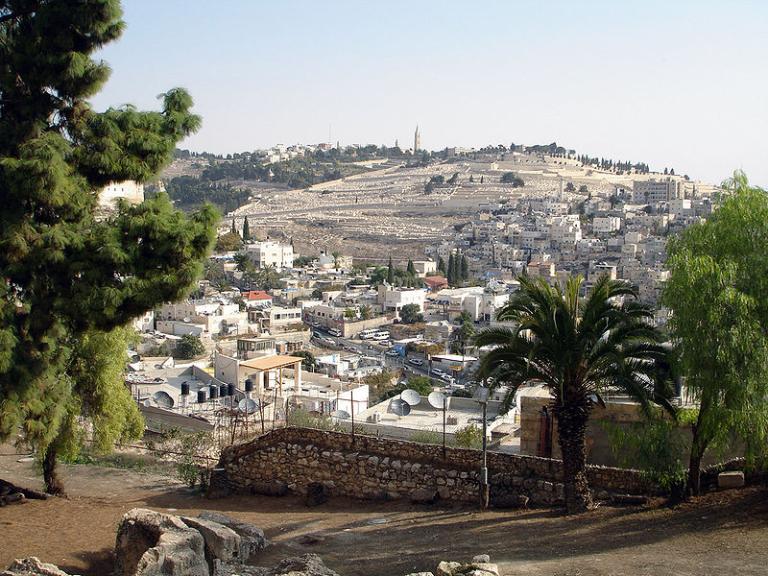
(Wikimedia Commons photo by Joe Freeman)
On Sunday morning, 2 March 1873, President Smith arranged with their guide to take a tent, a table, several chairs, and a carpet up onto the Mount of Olives. He and his companions rode up the slope on horseback. When all was ready, and after Elder Carrington had offered an invocation, President Smith led them in a prayer rededicating the land of Palestine for the return of the Jews. “When on the Mount of Olives with our faces bowed toward Jerusalem,” he later reported to the Saints back in Utah,
we lifted our prayers to God that he would preserve you and confound your enemies. We felt in our hearts that Zion was onward and upward, and that no power could stay her progress; that the day was not far distant when Israel would gather, and those lands would begin to teem with a people who would worship God and keep his commandments; that plenty and the blessings of eternity would be poured out bounteously upon that desert land, and that all the prophecies concerning the restoration of the house of Israel would be fulfilled.[1]
After President Smith’s prayer, the other brethren prayed in turn, confirming and repeating his supplications for themselves and on behalf of scattered Judah. Their assigned task completed, the party then returned to the mountains of North America. The memories of their visit to Palestine remained with them, however. As a relatively recent biographer of Lorenzo Snow puts it:
Lorenzo’s words and conduct during the quarter of a century of life that was to remain after his Palestine tour reflected the lasting impression this trip had made upon him. The experience transformed him into a man more sensitive to the reality of Jesus’ earthly life and ministry… Thereafter, his sermons that developed themes of biblical history or doctrine would have greater depth of meaning because of his direct exposure to the ancient land of the prophets and the patriarchs… But, more germane to his highest role as a special witness of Jesus Christ, were the spiritual assurances and illuminations he had received of the Savior’s divinity and Godhood that had come to him as he had visited the historic places where the great Messianic drama had been enacted. These would ever be in his heart and his mind’s eye in the years ahead as he served and bore testimony of the Master.[2]
[1] Journal of Discourses 16:102.
[2] Francis M. Gibbons, Lorenzo Snow: Spiritual Giant, Prophet of God (Salt Lake City: Deseret Book, 1982), 138, 148.











